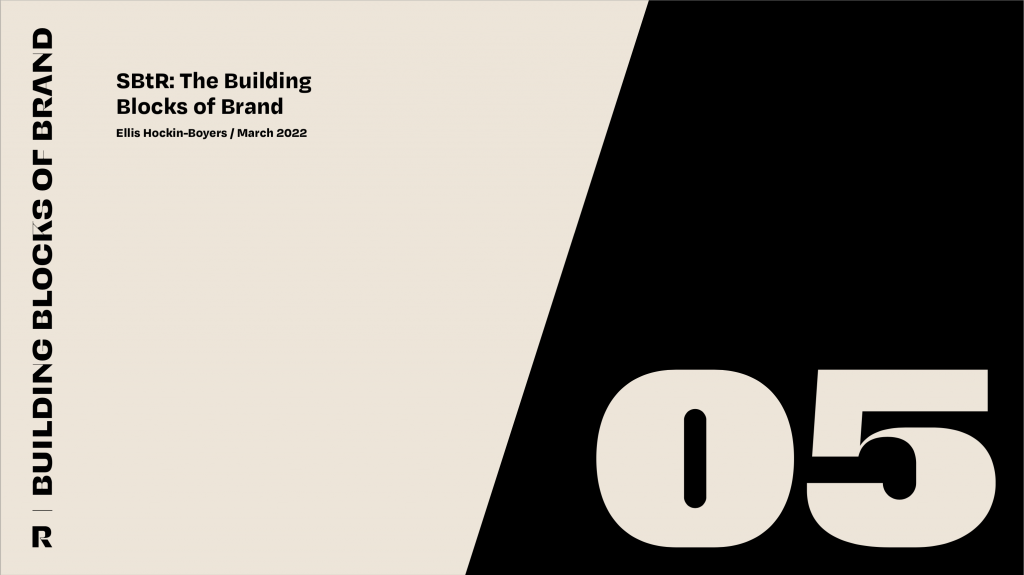
SBTR: The Building Blocks of Brand

With Build to Rent (BTR) going from strength to strength in the UK & Ireland—regularly setting records for investment and delivery—we have seen significant strides in how operators in this space present, explain and deliver on their brand propositions.
To date, the attention has been predominantly on ‘multifamily’ assets: apartment complexes with sophisticated service propositions, plentiful shared amenities, either within urban centres or well connected to them.
This is all due to change though. Investors, developers and operators are increasingly attracted to the market opportunity around high-quality detached or semi-detached rental homes for single families, so called ‘Suburban Build to Rent’ (SBTR). A reported £7.8 billion of institutional capital is earmarked for deployment into the sector over the next 3–5 years.[1]
As activity in the sector grows, capturing the attention of the 2.4 million (and growing) private renters who choose to live in houses[2] will increasingly require players in the space to align their brand propositions, narratives, and identities to best convey the value of their product.
In the latest in our ‘building blocks of brand’ series, we look at some of the key branding considerations for best results when building your SBtR brand.
1. Deepening your audience knowledge
Whilst multifamily BtR has typically found success targeting young professional flat sharers and couples, SBtR by its nature has a much broader appeal with families—some 43% of household types in one recent survey[3], and this audience must be considered when building your SBtR proposition.
So, what does this mean in practical terms? One crucial aspect is how you connect residents’ needs to benefits offered in your messaging. For example, whilst young urban millennials and zoomers will often first consider alignment with their own values[4] and lifestyle when assessing how a brand meets their needs, families will typically consider the needs of children as a competing priority, with nearly 9/10 parents saying their children influenced their purchasing decisions.[5]
By showing how your SBTR brand meets the needs of the younger family members, you can not only win crucial influencers on the purchase decision but help to build crucial tenant-winning trust with the parents.
To do this authentically, you need to consider the whole journey. Do you have materials/protocols to engage the whole family during the lettings process? Do you include persons of a range of ages in your art direction?
The success of the BtR proposition relative to the traditional private rental market is its customer centricity, and SBtR is no different. In order to build a winning brand in the space, the first port of call is to get closer to your key audience groups.

2. Capturing the character of your location
One of the crucial distinctions between the BtR multifamily and SBtR propositions is the proximity and relationship to urban spaces.
Many BtR developments have found great success aligning themselves with the cultural tropes associated with urban centres, connecting with trends in fashion, music, and tech, and building partnerships with ride-hailing and food-delivery brands that support an ‘on the go’ lifestyle.
SBtR brands looking to draw tenants to their schemes must hit the right beats as well, but the playbook will look very different.
For instance, where BTR brands might look to play on themes of connectivity, excitement and exploration, SBTR brands can look to attract their audiences on the grounds of space, tranquillity, and comfortability.
Signs are that the above will be fertile grounds for some time to come: 72% of respondents to Knight Frank’s latest client survey said that having a garden or access to green space is more important now than it was pre-pandemic.
Getting the most out of your location in your branding will require both discipline and genuine curiosity. Without having the overall amenities or reputation of a larger municipality for the brand to lean on, players in this space will need to look deeper into the history, tradition and geographical makeup of the area to draw out the appeal of its authentic character.
3. Defining your experience
Defining, encapsulating and conveying the experience of your brand is one of the most challenging, but ultimately beneficial tasks in the branding process.
Multifamily BtR brands have typically made their impressive communal amenities and actively managed service propositions the underlying focus of their brand experience (yoga on the roof anyone?).
However, SBtR brands will typically need to take a more nuanced approach to defining the experience they offer for their residents.
The key is to carefully define a brand proposition that you can credibly stand behind, and be disciplined in applying it through every touch point.
If your experience is all about comfortability and peace of mind, you need to ensure that your tenants feel reassured and at ease whenever they speak to a property manager, fill in administrative forms, or even walk around the neighbourhood.
The way you define and deliver on your brand experience, will be the key determinant in how your audiences think and feel about your brand. Getting it right is the key to unlocking your schemes’ true potential.
Looking forwards…
SBtR has enormous potential as part of the solution to the UK’s structural undersupply of homes. As this sector matures, the case for strong brands will only grow.
The best time to have a conversation about what brand you want to be, is always now.
[1] https://content.knightfrank.com/research/2329/documents/en/the-suburban-btr-housing-report-2021-8540.pdf
[2] https://content.knightfrank.com/research/2329/documents/en/the-suburban-btr-housing-report-2021-8540.pdf
[3] https://www.londonfirst.co.uk/sites/default/files/documents/2021-11/who-lives-in-btr-nov21.pdf
[4] https://www2.deloitte.com/content/dam/Deloitte/global/Documents/2021-deloitte-global-millennial-survey-decade-review.pdf
[5] https://nrf.com/research/consumer-view-fall-2019